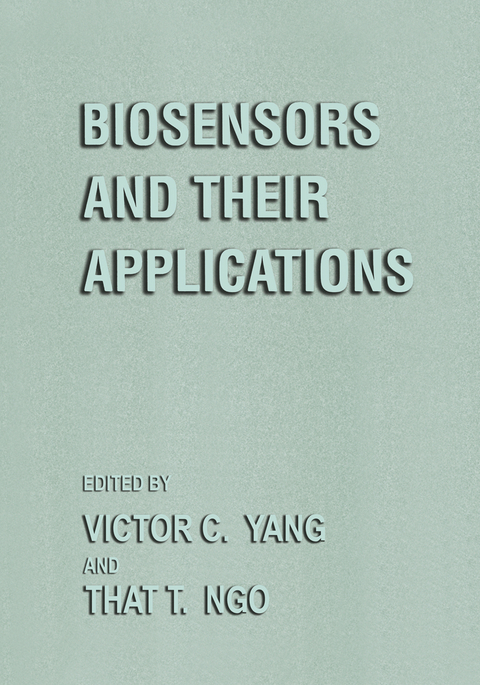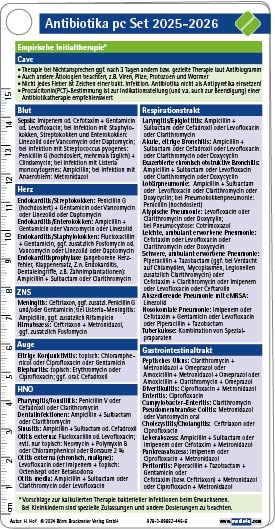
Biosensors and Their Applications
Kluwer Academic/Plenum Publishers (Verlag)
9780306460876 (ISBN)
1. Biochromic Polydiacetylene Synthetic Membranes.- 1.1. Introduction.- 1.2 Assembling the System.- 1.3 Membranelike Structures in Biosensing.- 1.4 Sensors and Biosensors Based on Conjugated Polymers.- 1.4.1. Basic Properties.- 1.4.2. Conjugated Polymer-Based Sensors.- 1.4.3. Polydiacetylenes and Chromic Effects.- 1.4.4. PDA-Based Biosensors.- 1.5 Conclusion.- References.- 2. Analysis of the Kinetics of Antigen-Antibody Interactions and Fractal Dimension in Biosensors.- 2.1. Introduction.- 2.2. Theory.- 2.2.1. Single-Fractal Analysis.- 2.2.2. Dual-Fractal Analysis.- 2.3. Results.- 2.4. Conclusions.- References.- 3. Avidin-Biotin Mediated Biosensors.- 3.1. Introduction.- 3.2. Avidin-Biotin System.- 3.3. Immobilization of Enzymes Through Avidin-Biotin Complexation.- 3.4. Layer-by-Layer Structure of Enzyme Multilayers.- 3.5. Conclusions.- References.- 4. Layered Functionalized Electrodes for Electrochemical Biosensor Applications.- 4.1. Introduction.- 4.2. Monolayer Enzyme Electrodes.- 4.3. Electrical Contact of Monolayer and Multilayer Enzyme Electrodes.- 4.4. Electrically Contacted Reconstituted Enzyme Electrodes.- 4.5. Integrated Layered NAD(P)+-Dependent Enzyme Electrodes.- 4.6. Layered Antigen Monolayer Electrodes for Electrochemical Probing of Antigen—Antibody Interactions.- 4.7. Layered Photoisomerizable Antigen Monolayer Electrodes for Reversible Probing of Antigen—Antibody Interactions.- 4.8. Layered Oligonucleotide Electrodes for Electrochemical Probing of DNA.- 4.9. Conclusions and Perspectives.- References.- 5. Biosensors Based on “Wired” Peroxidases.- 5.1. Introduction.- 5.2. “Wiring” of Horseradish Peroxidase.- 5.3. Thermostable Soybean Peroxidase.- 5.4. Bienzyme Systems.- 5.5. Applications.- 5.5.1. NAD(P)H Sensing.- 5.5.2. Avidin and Biotin.-5.5.3. Oligonucleotide Sensing.- 5.5.4. Characterization of Electrodes Generating and Consuming H2O2.- 5.5.5. Organic-Phase Peroxide Sensors.- References.- 6. Nonseparation Electrochemical Enzyme Immunoassay Using Microporous Gold Electrodes.- 6.1. Introduction.- 6.2. Experimental.- 6.2.1. Apparatus.- 6.2.2. Reagents.- 6.2.3. Preparation of Microporous Gold Electrodes and Immobilization of Binding Proteins.- 6.2.4. Nonseparation Sandwich-Type Electrochemical Enzyme Immunoassays.- 6.2.5. Nonseparation Competitive Electrochemical Enzyme Binding/Immunoassay.- 6.3. Results and Discussion.- 6.3.1. Noncompetitive Electrochemical Enzyme Immunoassay for Proteins and Microorganisms.- 6.3.2. Competitive Electrochemical Enzyme Binding Assay for Small Molecules.- 6.4. Future Directions.- 6.5. Conclusions.- References.- 7. Liposomes as Signal-Enhancement Agents in Immunodiagnostic Applications.- 7.1. Introduction.- 7.2. Amplification of an Enzyme Immunoassay Using Liposomes.- 7.2.1. Preparation of Enzyme-and Antibody-Bearing Liposomes.- 7.2.2. Preparation of Enzyme—Antibody Conjugate.- 7.2.3. Characterization of Liposomes with Immobilized HRP and Antibody.- 7.2.4. Sandwich ELISA with Liposomes and Enzyme—Antibody Conjugate.- 7.2.5. Results and Discussion.- 7.3. Amplification of Fluoroimmunoassay Using Liposomes.- 7.3.1. Preparation of Antibody-Bearing Fluorescent Liposomes.- 7.3.2. Preparation of Fluor—Antibody Conjugate.- 7.3.3. Fluoroimmunoassay with Liposomes and Fluorescein—Antibody Conjugate.- 7.3.4. Results and Discussion.- 7.4. Application of Ganglioside-Bearing Liposomes as Sensitive Probes for Potent Neurotoxins.- 7.4.1. Preparation and Characterization of GT1b Liposomes.- 7.4.2. Fluoroimmunoassay with GT1b Liposomes.- 7.4.3. Results and Discussion.- 7.5.Conclusions.- References.- 8. Recent Development in Polymer Membrane-Based Potentiometric Polyion Sensors.- 8.1. Introduction.- 8.2. Development of Polymer Membrane-Based Polyion Sensors.- 8.2.1. Extraction Chemistry.- 8.2.2. Response Slope.- 8.3. Applications of Polyion Sensors.- 8.3.1. Measuring the Blood Heparin Levels.- 8.3.2. Probing Binding Reactions.- 8.3.3. Detecting Protease Activities.- 8.4. Conclusions.- References.- Piezoelectric Immunosensors: Theory and Applications.- 9.1. Introduction.- 9.2. Quartz Crystal Microbalance—Theory.- 9.3. Quartz Crystal Microbalance—Applications.- 9.3.1. Clinical Analysis.- 9.3.2. Environmental Analysis.- 9.3.3. Food Analysis.- 9.4. Quartz Crystal Microbalance—Commercial Sources.- 9.5. Quartz Crystal Microbalance—Conclusions and Future Directions.- References.- 10. Surface Photovoltage-Based Biosensor.- 10.1. Introduction.- 10.2. Measurement Principle.- 10.3. Enzyme Sensor.- 10.4. Surface Photovoltage Immunosensor.- 10.4.1. A Highly Sensitive Immunosensor.- 10.4.2. Sample Preparation and Measurement.- 10.5. Microbial Biological Oxygen Demand Sensor.- 10.5.1. Surface Photovoltage-Based Microbial Biological Oxygen Demand Sensor.- 10.5.2. Immobilization Method ofT. cutaneumon the Device.- 10.5.3. Optimization of the System.- 10.5.4. Comparison with BODSand BOD5.- 10.6. Conclusion.- References.- 11. Surface Plasmon Resonance Biosensors.- 11.1. Introduction.- 11.2. Related Techniques.- 11.3. Immobilization of Ligands.- 11.4. Qualitative Characterization of Molecular Interactions.- 11.5. Measurement of Analyte Concentration.- 11.6. Determination of Kinetic and Thermodynamic Interaction Constants.- 11.7. Nonexponential Binding Behavior.- 11.8. Consistency and Choice of the Right Model.- 11.9. Studying Interactions inSolution.- 11.10. Mass Transport Limitation.- 11.11. Conclusions.- References.- 12. Luminescent Biosensors.- 12.1. Introduction.- 12.2. Enzyme Reactions.- 12.2.1. Basic Reactions.- 12.2.2. Extension Through Oxidoreductases as Auxiliary Enzymes.- 12.3. Design of the Sensing Layer.- 12.3.1. Basic Procedures for Enzyme Immobilization.- 12.3.2. Coimmobilization of Multienzyme Systems on the Same Membrane.- 12.3.3. Compartmentalization.- 12.3.4. Cosubstrate Confinement.- 12.5. Sensor Design.- 12.6. Applications.- 12.6.1. Determination of Other Analytes with Auxiliary Enzymes..- 12.6.2. Stability.- 12.7. Conclusions and Trends.- References.- 13. Micromachining for Biosensors and Biosensing Systems.- 13.1. Introduction.- 13.2. Etching.- 13.2.1. Wet Etching.- 13.2.2. Dry Etching.- 13.3. Free-Standing Microstructure Fabrication.- 13.3.1. Surface Micromachining.- 13.3.2. Lost Wafer Process.- 13.4. High Aspect Ratio Microstructure Fabrication.- 13.4.1. LIGA.- 13.4.2. HEXSIL.- 13.5. Microchannel Fabrication.- 13.5.1. Application of Bulk Micromachining.- 13.5.2. Application of Surface Micromachining.- 13.6. Bonding.- 13.6.1. Gluing.- 13.6.2. Low-Temperature Glass Bonding.- 13.6.3. Eutectic Bonding.- 13.6.4. Fusion Bonding.- 13.6.5. HF Bonding.- 13.6.6. Anodic Bonding.- 13.7. Conclusion.- References.- 14. Simultaneous Determination of Glucose and Analogous Disaccharides by Dual-Electrode Enzyme Sensor System.- 14.1. Introduction.- 14.2. Dual-Electrode Enzyme Sensor System.- 14.2.1. Preparation of the Oxygen-Electrode-Based Sequence Electrode.- 14.2.2. Preparation of the Hydrogen-Peroxide-Electrode-Based Sequence Electrode.- 14.2.3. Preparation of the Carbon-Paste (CP)-Electrode-Based Sequence Electrode.- 14.2.4. Preparation of Disposable Sequence Electrode Strips.- 14.2.5. FIA Configuration and Measuring Procedure.- 14.3. Simultaneous Determination of Glucose and Sucrose.- 14.4. Simultaneous Determination of Glucose and Maltose.- 14.5. Simultaneous Determination of Glucose and Lactose.- 14.6. Discussion.- References.- 15. Application of Biosensors to the Measurement of Neurotransmitter Function.- 15.1. Introduction.- 15.2.In Vivo Microdialysis.- 15.2.1. The Microdialysis Probe.- 15.2.2. Factors Affecting in Vivo Microdialysis Measurements.- 15.3. Voltammetric Biosensors.- 15.3.1. Voltammetric Measurements.- 15.3.2. Electrodes.- 15.3.3. Detectable Compounds.- 15.3.4. Application.- 15.4. Antibody Microprobes.- 15.4.1. Probe Design.- 15.4.2. Experimental Use.- 15.5. Conclusions and the Future.- References.- 16. Biosensors for Agrochemicals.- 16.1. Introduction.- 16.2. Insecticides.- 16.2.1. Organophosphates, Carbamates, and Organochlorines.- 16.2.2. Pyrethroids Immunosensors.- 16.3. Herbicides.- 16.3.1. Triazines.- 16.3.2. Phenylacetic Acids.- 16.3.3. Substituted Ureas and Sulfonylureas.- 16.3.4. Imidazolinones.- 16.4. Fungicides.- 16.4.1. Dithiocarbamate Enzyme Sensor.- 16.4.2. Benzimidazole Immunosensor.- 16.5. Future Trends.- References.- 17. Thick-Film Biosensors.- 17.1. Introduction.- 17.2. Thick-Film Technology.- 17.2.1. Screen-Printing Technique.- 17.2.2. Materials.- 17.2.3. Trends.- 17.3. Applications.- References.- 18. Alternative Polymer Matrices for Potentiometric Chemical Sensors.- 18.1. Introduction.- 18.2. Sensor Membranes for All-Solid-State Electrodes.- 18.3. Silicone Rubber Matrix-Based ISE Membranes.- 18.3.1. One-Component Room Temperature Vulcanizing-Type Silicone Rubber (RTV-SR) Matrix.- 18.3.2. RTV-SR Membrane-Based Ion-Selective Electrodes.- 18.3.3. A pCO2Sensor with the Valinomycin-Based RTV-SR Membrane.- 18.4. Polyurethane-Based ISE Membranes.- 18.4.1. Polyurethane Matrix.- 18.4.2. Ion- and Biosensor Membranes Based on PU-Blended Matrices.- 18.4.3. Biocompatible ISE Membranes.- 18.5. Concluding Remarks.- References.- 19. Rapid Measurement of Biodegradable Substances in Water Using Novel Microbial Sensors.- 19.1. Introduction.- 19.2. Application of Microbial Sensors in Pollution Control.- 19.3. Prehydrolysis of Macromolecules.- 19.4. Effect of Salt on the Value of SensorBOD.- 19.5. Analysis of Wastewater from a University in Hong Kong.- 19.6. A Novel Approach Using the Salt-Tolerant Yeast Arxula.- References.
| Erscheint lt. Verlag | 30.4.2000 |
|---|---|
| Zusatzinfo | XIX, 360 p. |
| Sprache | englisch |
| Maße | 178 x 254 mm |
| Themenwelt | Medizin / Pharmazie ► Medizinische Fachgebiete ► Pharmakologie / Pharmakotherapie |
| Medizin / Pharmazie ► Pharmazie | |
| Naturwissenschaften ► Biologie ► Biochemie | |
| Naturwissenschaften ► Biologie ► Genetik / Molekularbiologie | |
| Technik ► Umwelttechnik / Biotechnologie | |
| ISBN-13 | 9780306460876 / 9780306460876 |
| Zustand | Neuware |
| Informationen gemäß Produktsicherheitsverordnung (GPSR) | |
| Haben Sie eine Frage zum Produkt? |
aus dem Bereich


